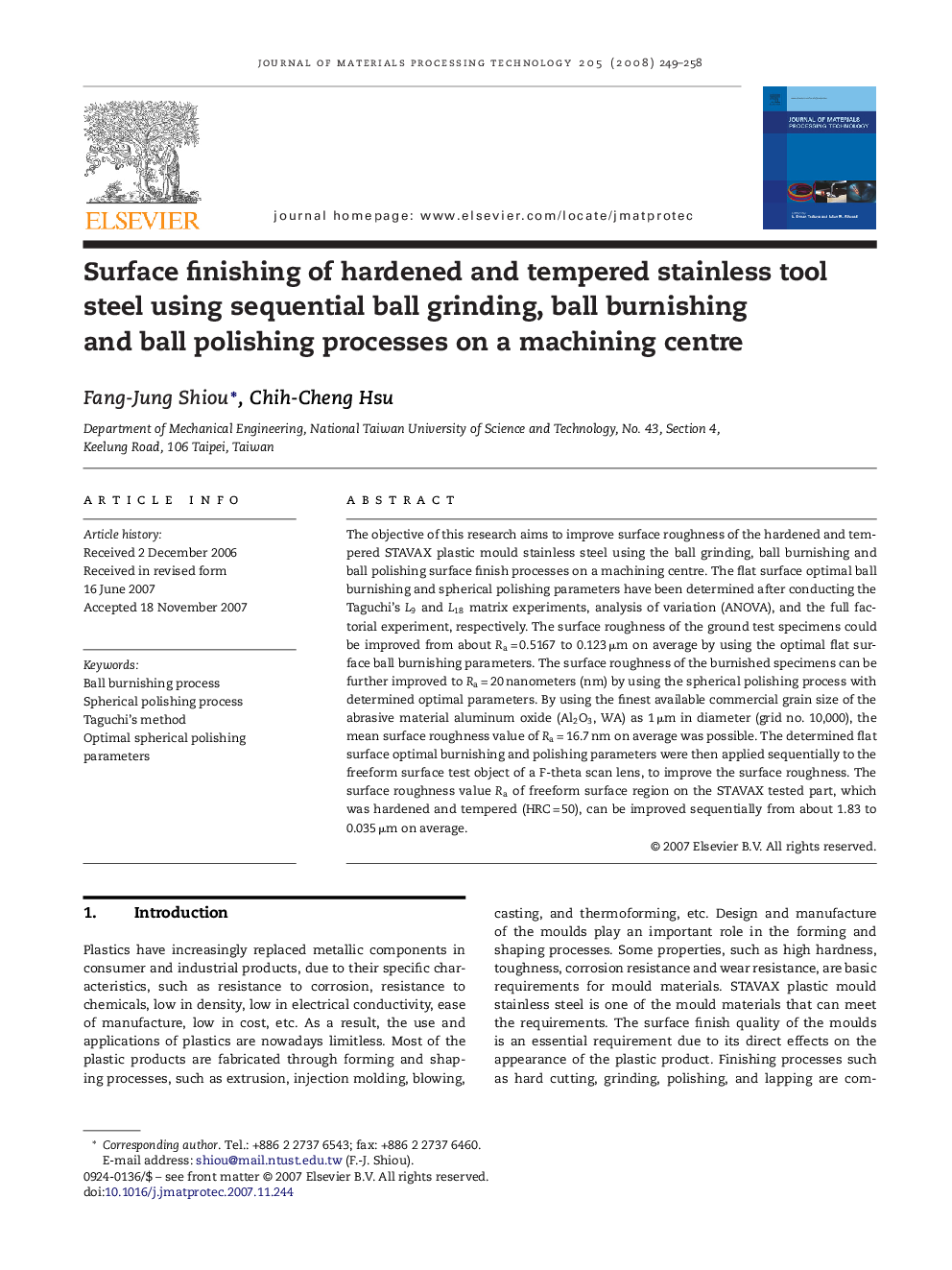| Article ID | Journal | Published Year | Pages | File Type |
|---|---|---|---|---|
| 795262 | Journal of Materials Processing Technology | 2008 | 10 Pages |
The objective of this research aims to improve surface roughness of the hardened and tempered STAVAX plastic mould stainless steel using the ball grinding, ball burnishing and ball polishing surface finish processes on a machining centre. The flat surface optimal ball burnishing and spherical polishing parameters have been determined after conducting the Taguchi's L9 and L18 matrix experiments, analysis of variation (ANOVA), and the full factorial experiment, respectively. The surface roughness of the ground test specimens could be improved from about Ra = 0.5167 to 0.123 μm on average by using the optimal flat surface ball burnishing parameters. The surface roughness of the burnished specimens can be further improved to Ra = 20 nanometers (nm) by using the spherical polishing process with determined optimal parameters. By using the finest available commercial grain size of the abrasive material aluminum oxide (Al2O3, WA) as 1 μm in diameter (grid no. 10,000), the mean surface roughness value of Ra = 16.7 nm on average was possible. The determined flat surface optimal burnishing and polishing parameters were then applied sequentially to the freeform surface test object of a F-theta scan lens, to improve the surface roughness. The surface roughness value Ra of freeform surface region on the STAVAX tested part, which was hardened and tempered (HRC = 50), can be improved sequentially from about 1.83 to 0.035 μm on average.
